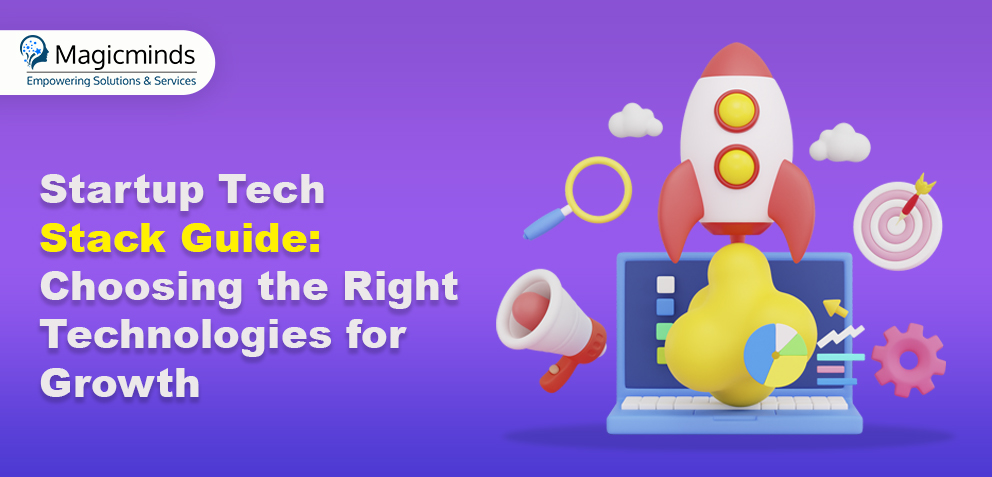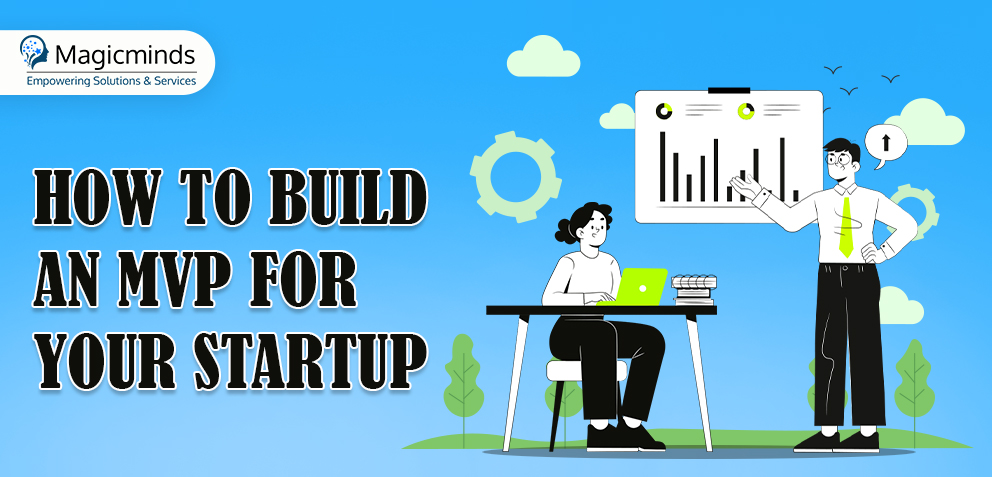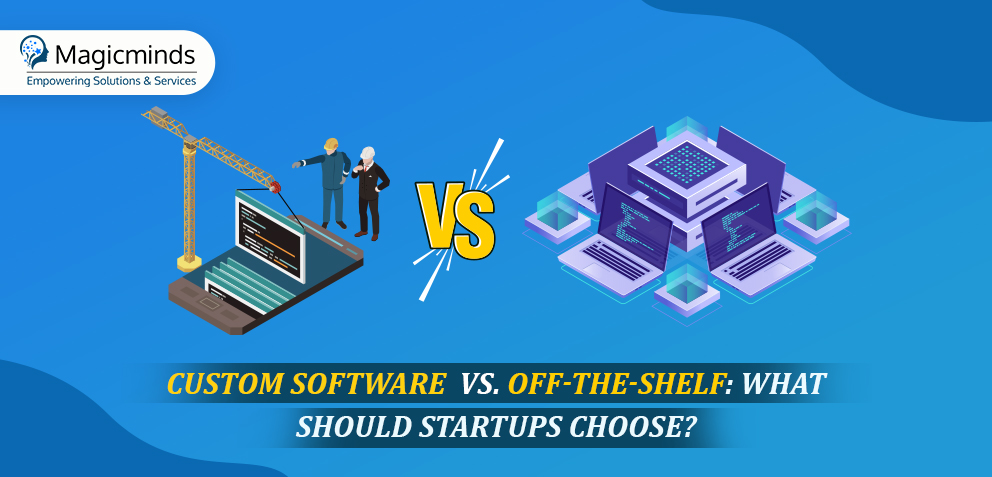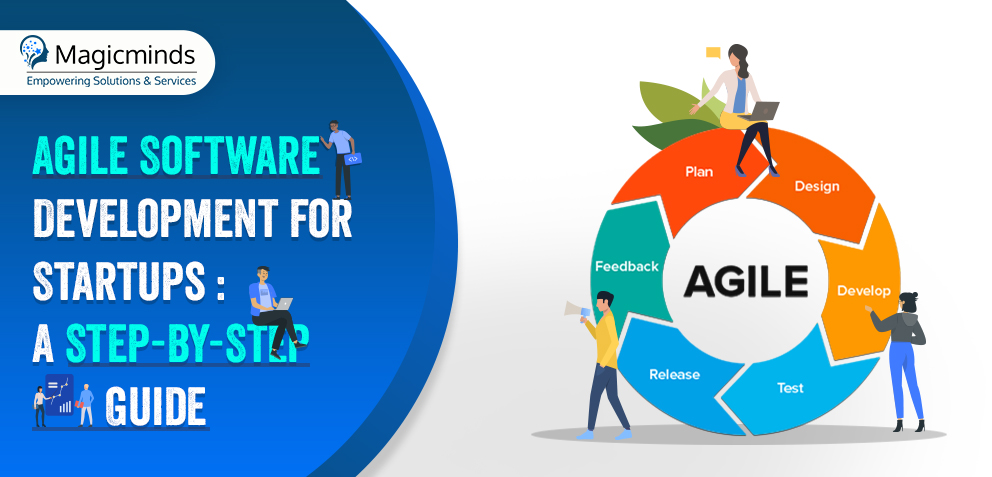Startup Tech Stack Guide: Choosing the Right Technologies for Growth

 Stay In-the-loop
Stay In-the-loop
Get fresh tech & marketing insights delivered right to your inbox.
Share this Article
Tags
Category
- .Net Developer
- Adtech
- Android App Development
- API
- App Store
- Artificial Intelligence
- Blockchain Development
- Chatbot Development
- CMS Development
- Cybersecurity
- Data Security
- Dedicated Developers
- Digital Marketing
- Ecommerce Development
- Edtech
- Fintech
- Flutter app development
- Full Stack Development
- Healthcare Tech
- Hybrid App Development
- iOS App Development
- IT Project Management
- JavaScript development
- Laravel Development
- Magento Development
- MEAN Stack Developer
- MERN Stack Developer
- Mobile App
- Mobile App Development
- Nodejs Development
- Progressive Web Application
- python development
- QA and testing
- Quality Engineering
- React Native
- SaaS
- SEO
- Shopify Development
- Software Development
- Software Outsourcing
- Staff Augmentation
- UI/UX Development
- Web analytics tools
- Wordpress Development
Having a fierce idea and understanding the market are not the only things you need to start a successful startup in 2025. You’ll also need a technology foundation that will enable quick scaling and growth. Given the rapid advancements in technology, selecting the best tech stack for a startup in 2025 has the potential to either accelerate or impede the growth of the business. In this guide, we break down what tech stacks are, their most popular forms, and offer unique advice made for SaaS, eCommerce, and FinTech startups. Additionally, access industry expert advice to guide your business toward growth.
What is a Tech Stack?
A tech stack is everything from the frameworks, programming languages, databases, and tools that make your application work. It is a building block of your product and has a direct impact on how effectively your team can develop, scale, and maintain your startup’s services.
Each tech stack consists of two main components:
- Frontend (Client-side): The areas that the users directly interact with within their browser or application.
- Backend (Server-side): The components that handle data, execute business logic, and communicate with other systems and databases.
Recommended Frameworks for the Frontend and Backend
Front End Frameworks
A frontend makes the first impression, and it matters the most. Frontend frameworks are a must in the world of startups.
- React.js. It is developing more than 40% of the world’s top 10,000 websites. It is renowned for its component-based architecture and community-centric support.
- Vue.js. One of the best frameworks due to its ease of learning and flexibility. It is well-suited for MVPs and swift prototyping.
- Angular. Provided by Google and used for enterprise and complex-grade applications.
Backend Frameworks
The backend is the core of the system, as it provides business logic, data operations, and protection.
- Node.js. The language is used to develop fast and scalable network applications, supporting platforms such as LinkedIn, Netflix, and others.
- Python (Django, Flask). Its readability and rapid development make it popular. Django serves many startups and even Instagram.
- Ruby on Rails. Emphasizes convention over configuration, ideal for startups focused on speed and simplicity.
- Java (Spring Boot). Fintech and enterprise-grade services frequently select Java (Spring Boot) to build large-scale, secure, and high-performance systems.
Databases
Information is vital for the best tech stack for a startup in 2025. Here are common options:
- PostgreSQL. This is an open-source database known for its reliability and high extensibility. This database is well-suited for complex and analytical queries.
- MongoDB: Unstructured data’s NoSQL agility for rapid deployment.
- MySQL: The most trustworthy and well-supported database in the industry, dominating the SaaS and eCommerce sectors.
Full Stack Combinations
Check out some of the familiar full stacks:
- MERN Stack: MongoDB, Express.js, React.js, Node.js
- MEAN Stack: MongoDB, Angular, Node.js
- LAMP Stack: Linux, Apache, MySQL, PHP
Custom Software Development for Startups
Build, Launch, and Scale with Magicminds' Expertise.
Choosing a stack based on startup type (SaaS, eCom, FinTech, etc.)
Every vertical has specific requirements. Your technology stack must fit your model and estimated growth.
SaaS (Software as a Service)
- Core requirements: Multi-tenancy, scalability, and swift iterations.
- Recommended stack: React.js frontend, Node.js/Python backend, PostgreSQL database, AWS or Google Cloud infrastructure.
- Why: These options provide scalable, robust deployment frameworks with ease of cost-efficient scaling and strong integration partnerships.
e-commerce
- Core high-level requirements: Availability, security, and seamless UX.
- Recommended stack: React.js/Vue.js frontend, Node.js/Java backend, MySQL/PostgreSQL database, integrated with payment gateways and analytics tools.
- Why: Smooth transactions and real-time inventory adjustments ensure seamless shopping experiences tailored to users.
FinTech
- Core requirements: Security, compliance, performance, and integrity of data.
- Recommended stack: Frontend: Angular. Backend: Java (Spring Boot) or Python. Database: PostgreSQL. The cloud infrastructure boasts robust security controls.
- Why: These are industry-proven technologies dealing with sensitive data under stringent regulations.
Scalability and Maintainability Considerations
Selecting the best tech stack for a startup in 2025 requires long-term visionary thinking and practicality.
- Scalability: Using Node.js or cloud-native technologies such as Kubernetes allows horizontal scaling and will easily support an increase in user numbers by ten, hundreds, or even a thousand times.
- Maintainability: Security support and documentation are vital for any organization. Mature frameworks with strong overall industry support, like Magicminds, positively influence maintainability. Poor maintainability previously led over 70% of startups to face failure and succumb to inherent technical debt.
- Talent Availability: The 2024 Developer Survey conducted by Stack Overflow highlighted JavaScript, Python, and Java among the highest skills qualifications available.
- Cost Efficiency: Serverless architectures combined with open-source technologies are ideal for drastically reducing overall maintenance costs associated with supporting early-stage startups.
Magicminds’ Tech Stack Recommendations
At Magicminds, we’ve helped over 100 startups launch and scale products across diverse industries with some of our significant software development tools.
Here’s what we recommend for the development of the best tech stack for a startup in 2025:
- Frontend: React.js for flexibility and ecosystem support.
- Backend: Node.js for SaaS and eCommerce, Python (Django) for data-intensive or AI-driven applications, and Java for FinTech.
- Database: PostgreSQL for most use cases; MongoDB for unstructured or rapidly changing data.
- Cloud: AWS for reliability and scalability; Google Cloud for AI/ML features.
- DevOps: Docker, Kubernetes, and CI/CD pipelines ensure faster releases and robust deployments.
In Conclusion
Ready to design the future of your startup? Book a complimentary strategy session for the best TechStack for startups 2025 with Magicminds today. The industry experts will guide you through the complicated and costly traps of technology decisions to build a sound basis for growth. We conducted an insightful sprint on the essentials of tech stack selection. The process is lengthy, but starting is the most important part. So, keep being inquisitive, and together, we can accomplish awe-inspiring things.
Having a fierce idea and understanding the market are not the only things you need to start a successful startup in 2025. You’ll also need a technology foundation that will enable quick scaling and growth. Given the rapid advancements in technology, selecting the best tech stack for a startup in 2025 has the potential to either accelerate or impede the growth of the business. In this guide, we break down what tech stacks are, their most popular forms, and offer unique advice made for SaaS, eCommerce, and FinTech startups. Additionally, access industry expert advice to guide your business toward growth.
What is a Tech Stack?
A tech stack is everything from the frameworks, programming languages, databases, and tools that make your application work. It is a building block of your product and has a direct impact on how effectively your team can develop, scale, and maintain your startup’s services.
Each tech stack consists of two main components:
- Frontend (Client-side): The areas that the users directly interact with within their browser or application.
- Backend (Server-side): The components that handle data, execute business logic, and communicate with other systems and databases.
Recommended Frameworks for the Frontend and Backend
Front End Frameworks
A frontend makes the first impression, and it matters the most. Frontend frameworks are a must in the world of startups.
- React.js. It is developing more than 40% of the world’s top 10,000 websites. It is renowned for its component-based architecture and community-centric support.
- Vue.js. One of the best frameworks due to its ease of learning and flexibility. It is well-suited for MVPs and swift prototyping.
- Angular. Provided by Google and used for enterprise and complex-grade applications.
Backend Frameworks
The backend is the core of the system, as it provides business logic, data operations, and protection.
- Node.js. The language is used to develop fast and scalable network applications, supporting platforms such as LinkedIn, Netflix, and others.
- Python (Django, Flask). Its readability and rapid development make it popular. Django serves many startups and even Instagram.
- Ruby on Rails. Emphasizes convention over configuration, ideal for startups focused on speed and simplicity.
- Java (Spring Boot). Fintech and enterprise-grade services frequently select Java (Spring Boot) to build large-scale, secure, and high-performance systems.
Databases
Information is vital for the best tech stack for a startup in 2025. Here are common options:
- PostgreSQL. This is an open-source database known for its reliability and high extensibility. This database is well-suited for complex and analytical queries.
- MongoDB: Unstructured data’s NoSQL agility for rapid deployment.
- MySQL: The most trustworthy and well-supported database in the industry, dominating the SaaS and eCommerce sectors.
Full Stack Combinations
Check out some of the familiar full stacks:
- MERN Stack: MongoDB, Express.js, React.js, Node.js
- MEAN Stack: MongoDB, Angular, Node.js
- LAMP Stack: Linux, Apache, MySQL, PHP
Choosing a stack based on startup type (SaaS, eCom, FinTech, etc.)
Every vertical has specific requirements. Your technology stack must fit your model and estimated growth.
SaaS (Software as a Service)
- Core requirements: Multi-tenancy, scalability, and swift iterations.
- Recommended stack: React.js frontend, Node.js/Python backend, PostgreSQL database, AWS or Google Cloud infrastructure.
- Why: These options provide scalable, robust deployment frameworks with ease of cost-efficient scaling and strong integration partnerships.
e-commerce
- Core high-level requirements: Availability, security, and seamless UX.
- Recommended stack: React.js/Vue.js frontend, Node.js/Java backend, MySQL/PostgreSQL database, integrated with payment gateways and analytics tools.
- Why: Smooth transactions and real-time inventory adjustments ensure seamless shopping experiences tailored to users.
FinTech
- Core requirements: Security, compliance, performance, and integrity of data.
- Recommended stack: Frontend: Angular. Backend: Java (Spring Boot) or Python. Database: PostgreSQL. The cloud infrastructure boasts robust security controls.
- Why: These are industry-proven technologies dealing with sensitive data under stringent regulations.
Scalability and Maintainability Considerations
Selecting the best tech stack for a startup in 2025 requires long-term visionary thinking and practicality.
- Scalability: Using Node.js or cloud-native technologies such as Kubernetes allows horizontal scaling and will easily support an increase in user numbers by ten, hundreds, or even a thousand times.
- Maintainability: Security support and documentation are vital for any organization. Mature frameworks with strong overall industry support, like Magicminds, positively influence maintainability. Poor maintainability previously led over 70% of startups to face failure and succumb to inherent technical debt.
- Talent Availability: The 2024 Developer Survey conducted by Stack Overflow highlighted JavaScript, Python, and Java among the highest skills qualifications available.
- Cost Efficiency: Serverless architectures combined with open-source technologies are ideal for drastically reducing overall maintenance costs associated with supporting early-stage startups.
Magicminds’ Tech Stack Recommendations
At Magicminds, we’ve helped over 100 startups launch and scale products across diverse industries with some of our significant software development tools.
Here’s what we recommend for the development of the best tech stack for a startup in 2025:
- Frontend: React.js for flexibility and ecosystem support.
- Backend: Node.js for SaaS and eCommerce, Python (Django) for data-intensive or AI-driven applications, and Java for FinTech.
- Database: PostgreSQL for most use cases; MongoDB for unstructured or rapidly changing data.
- Cloud: AWS for reliability and scalability; Google Cloud for AI/ML features.
- DevOps: Docker, Kubernetes, and CI/CD pipelines ensure faster releases and robust deployments.
In Conclusion
Ready to design the future of your startup? Book a complimentary strategy session for the best TechStack for startups 2025 with Magicminds today. The industry experts will guide you through the complicated and costly traps of technology decisions to build a sound basis for growth. We conducted an insightful sprint on the essentials of tech stack selection. The process is lengthy, but starting is the most important part. So, keep being inquisitive, and together, we can accomplish awe-inspiring things.


